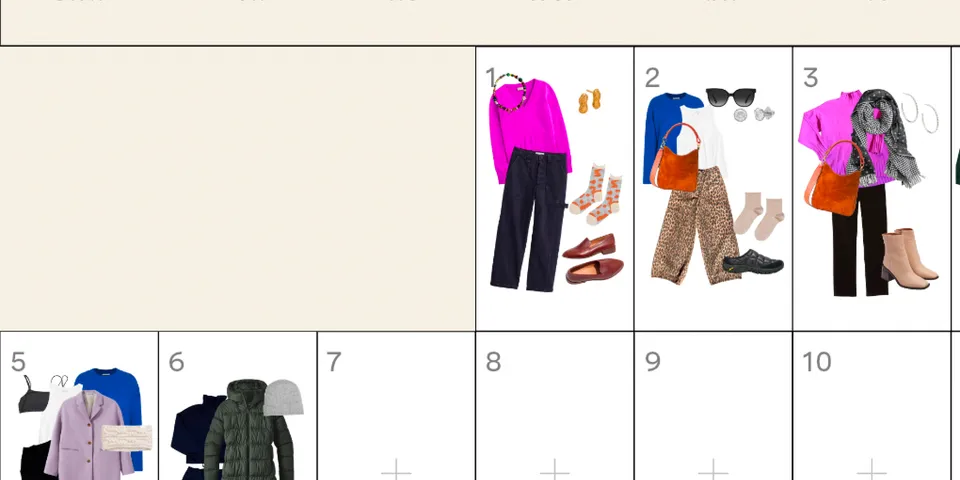
Why I'm obsessed with inventory apps like Indyx
For the past few years, I’ve been keeping a total inventory of my wardrobe on a board in Pinterest.
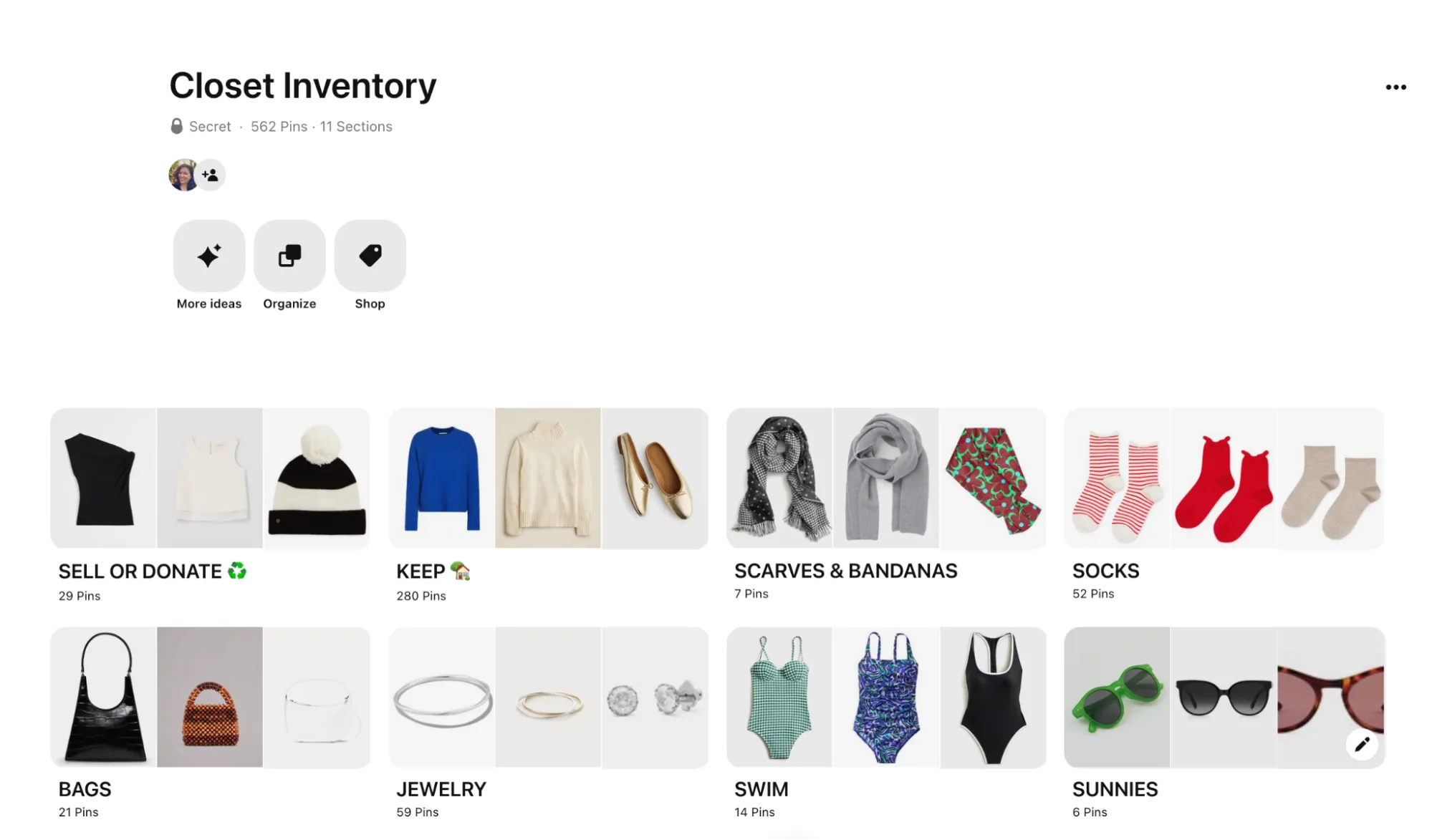 A snapshot of my inventory categories today
A snapshot of my inventory categories today
People who know me in real life may be surprised to learn that I really love playing with my clothes.
I wouldn’t say that I’m a particularly fashionable person. Most days I prioritize comfort and utility over aesthetics. That means lots of yoga pants and WFH cozies.
When I do get dressed for events, I treat it like costuming.
This is my glam old-lady on vacation costume. This is my kooky auntie attends another baby shower costume. This is my local yokel sings country music at the hootenanny costume.
Lately I’ve been trying to do a better job of reconciling the cosplay with who I am as a person.
Finding my style parameters
When I turned 35, I hired Dacy Gillespie, the stylist who runs Mindful Closet.
Dacy taught me how to shop: using inspiration boards, knowing my measurements, and defining my personal style parameters. I learned that I’m drawn to high-contrast (black and white) looks and abstract, geometric patterns (instead of sweet florals). Dacy pushed me to try different silhouettes like peplum tops and bias skirts that I wouldn’t have shopped on my own. She helped me edit my wardrobe and fill in some missing items so I could have less anxiety about packing for work trips.
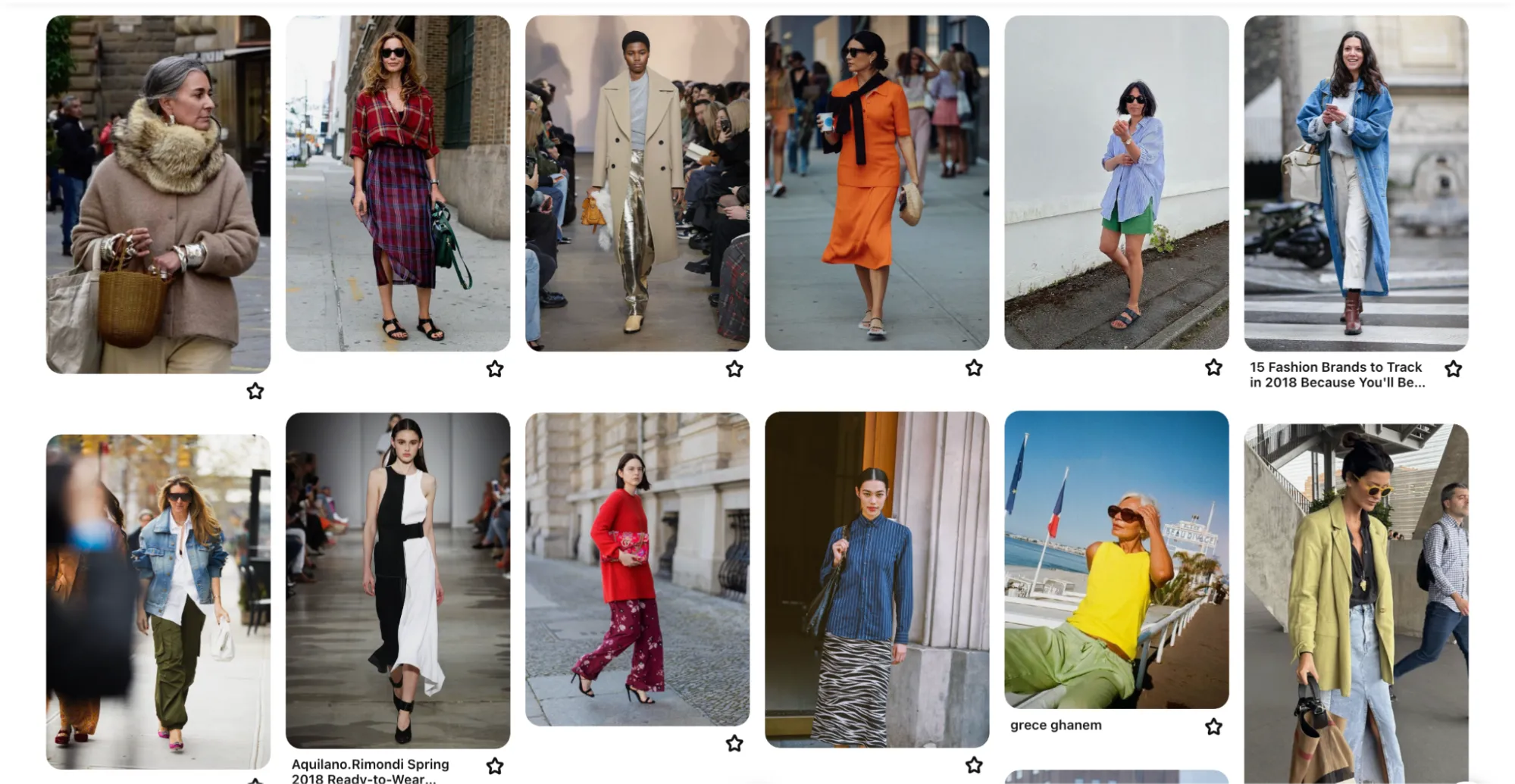 The original inspiration board I shared with Dacy
The original inspiration board I shared with Dacy
It was such a lovely experience, and I’m so glad I went through the process with her!
Getting to fewer, better
One process that’s an ongoing project for me is reducing my total wardrobe inventory.
First, because I know I have a huge over-shopping problem. I own more items that I can realistically wear. Over-consumption is out of alignment with my personal core values.
Second, because I live in an old house (c. 1908) with extremely limited closet space. I can fit exactly 38 Huggable Hangers on my side of the bedroom closet. Everything else ends up overflowing into the coat closet or the sliver of hanging space next to our laundry units. Right now I have three Sterilite containers filled with out of season items taking up floor space in my office. Not good.
When it comes to clothes, I want to:
- Own fewer, better things
- Dress to feel comfortable, confident, expressive, and creative
- Mend and repair items so they last as long as possible
- Buy more vintage and second-hand
- Maximize cost per wear
- Sell or donate anything that no longer works for me
I don’t think I’ll ever pare down to a true capsule wardrobe, but I’d like to reduce to ~400 items, including jewelry, pajamas, socks, undies, and accessories.
For a long time, the Pinterest board helped me remember what I already owned so I didn’t buy duplicates. It also helped me keep track of where garments were stored, so I could visualize my wardrobe without pulling my closets apart. Although, apparently knowing that I already own 52 sets of socks hasn’t kept me from accumulating new pairs. I love a whimsical ankle situation!
Moving from Pinterest to Indyx
I’ve been vaguely aware of Indyx for at least a year now, and I have a few online friends who have recommended it, like Salma. At some point I downloaded the app but I never completed the onboarding flow.
About a week ago, I saw a TikTok video with a hook about only buying 12 pieces of clothing in the whole year. In the video, Devon references an article from Vogue that says:
- The average American buys 53 items per year
- We should only be buying 5 items per year for sustainability,
- A sufficient wardrobe should consist of 74 garments for 20 outfits (!!)
Without scouring through orders and receipts, I know I bought at least 40 items last year and maybe 12% of them were second-hand through Poshmark or The RealReal.
Devon’s video goes on to show a number of impressive charts and graphs, measuring things like the total number of items they added year-over-year and the percentage of “loves” vs. “mistakes.”
I am nothing if not a data girlie, so before I even finished watching the video, I scrolled over to the dormant Indyx app on my phone and got to work.
→ If you want to try Indyx, you can reference my username melaniecrissey as a referral code and I can earn credits, thank you 💕
Luckily, having the existing Pinterest board is making the migration process pretty painless.
Over the past few days, I’ve been organizing my closets in real life, pulling out items to donate.
As I get to each item I want to keep, I download the image from my Pinterest board and upload it to Indyx. If it’s a recently purchased item, I check my Gmail inbox for the order receipt so I can enter the purchase date and the original price to calculate cost per wear.
So far I’ve moved 268 items over.
What I love about Indyx so far
Flat lays
When you upload a product image to Indyx, the app uses Photoroom to automatically remove the background from around the item.
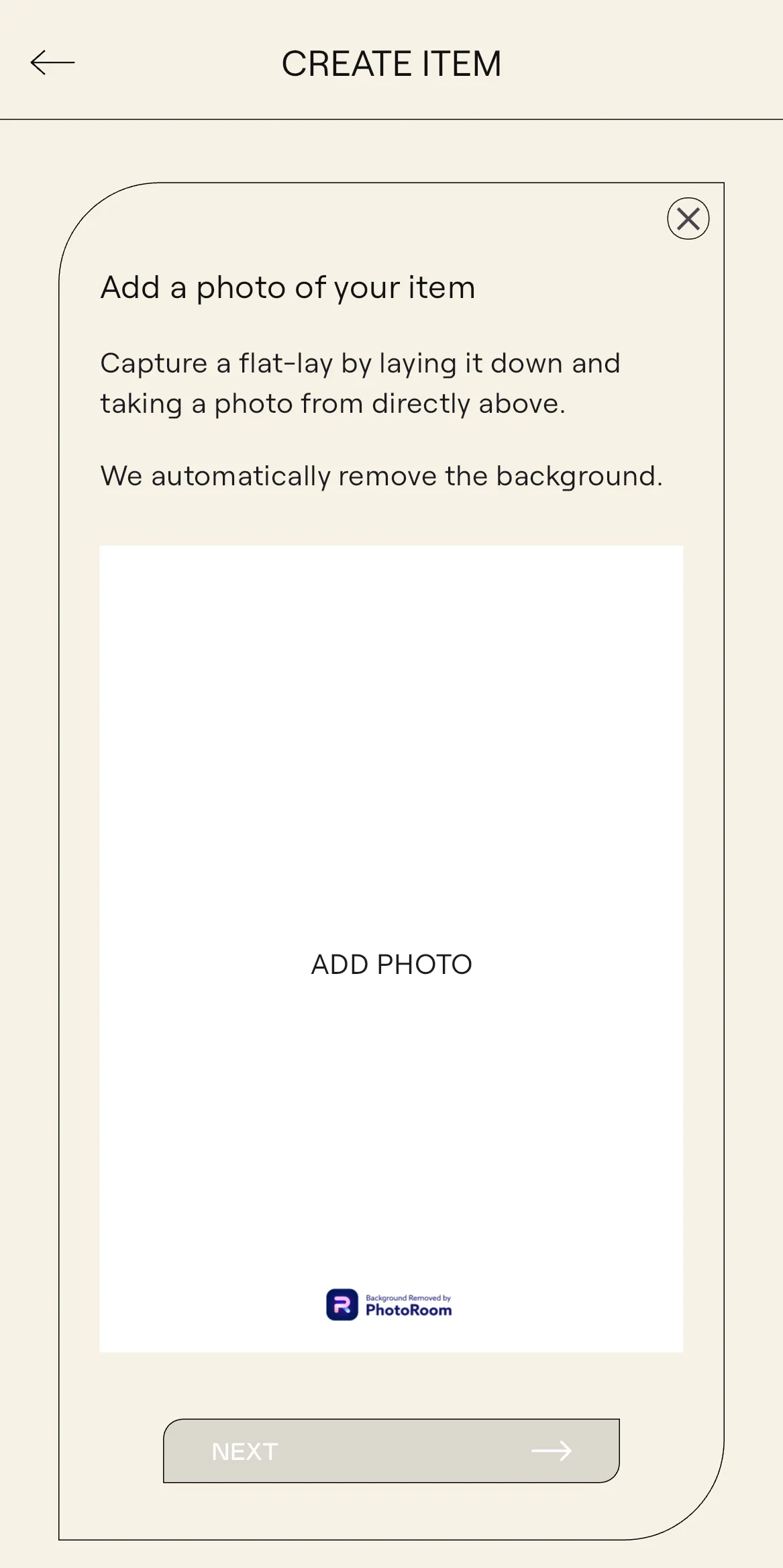
One thing that always bugged me about my Pinterest board is that I didn’t have a clean flat lay for every product. Especially for athleisure, the e-commerce sites wouldn’t have a photo of the product that wasn’t on a model. For vintage items, I’d either have a messy at-home photo or a “close match” that I found online.
With Indyx, it’s so much easier to get a clean shot. I throw the item down on the floor (usually on the bathroom tiles where there’s less dog hair) and take an overhead picture. Indyx does the photoshop work for me, so everything looks standardized when I scroll through. Much better.
The outfit to calendar workflow
As a millennial who grew up watching and rewatching Clueless, I’ve been dreaming about Cher’s outfit builder technology since I was old enough to rent the movie from Blockbuster Video.
Indyx doesn’t tell me if there’s a style mismatch or use AI to overlay the clothes on a paper doll version of my body. But, it’s super fun to select and drop all of my items onto an outfit pane. I can pinch and zoom to rearrange the layout, bringing accessories to the forefront. Then the outfits can go onto the calendar to automatically track cost per wear.
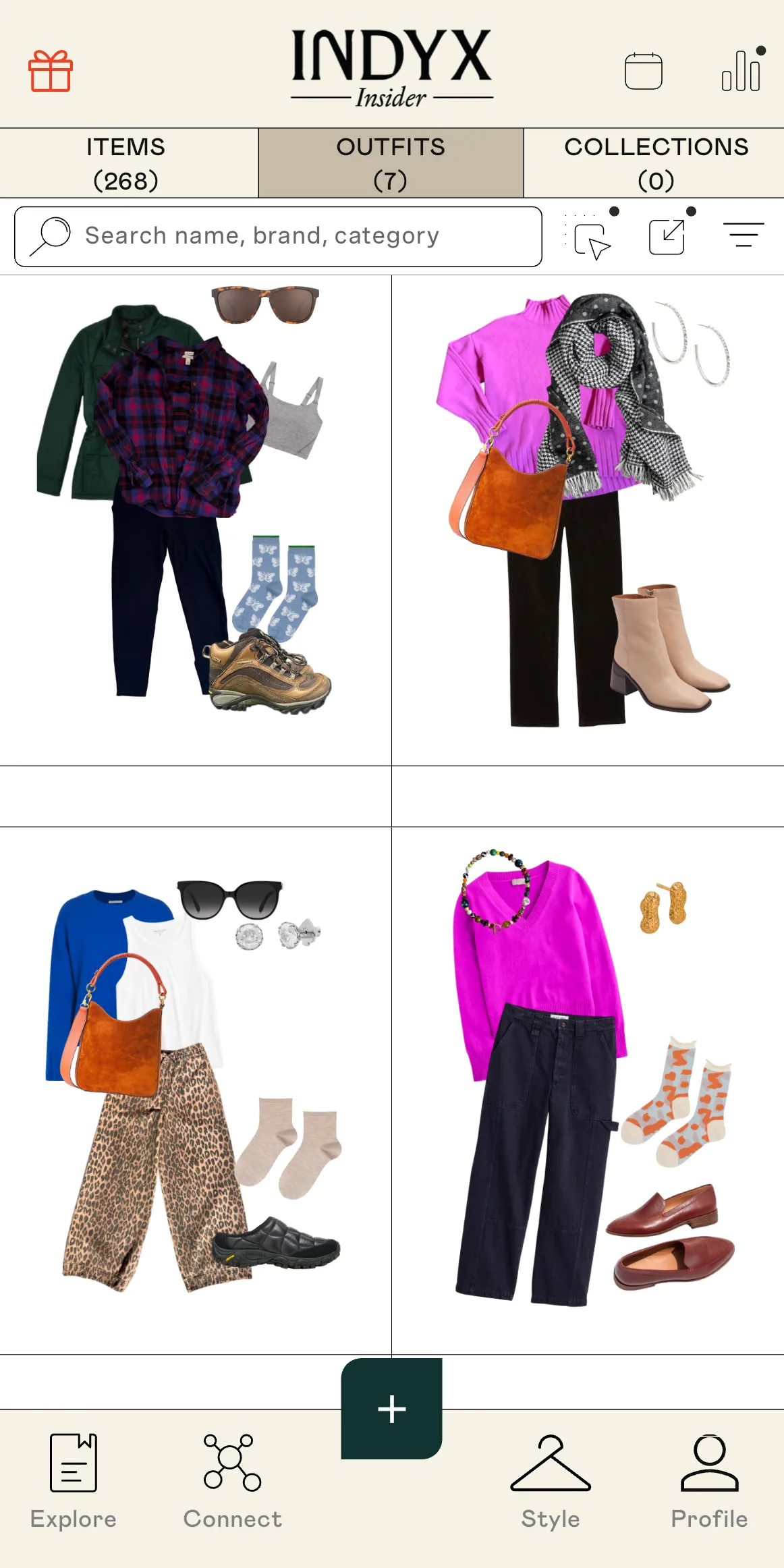
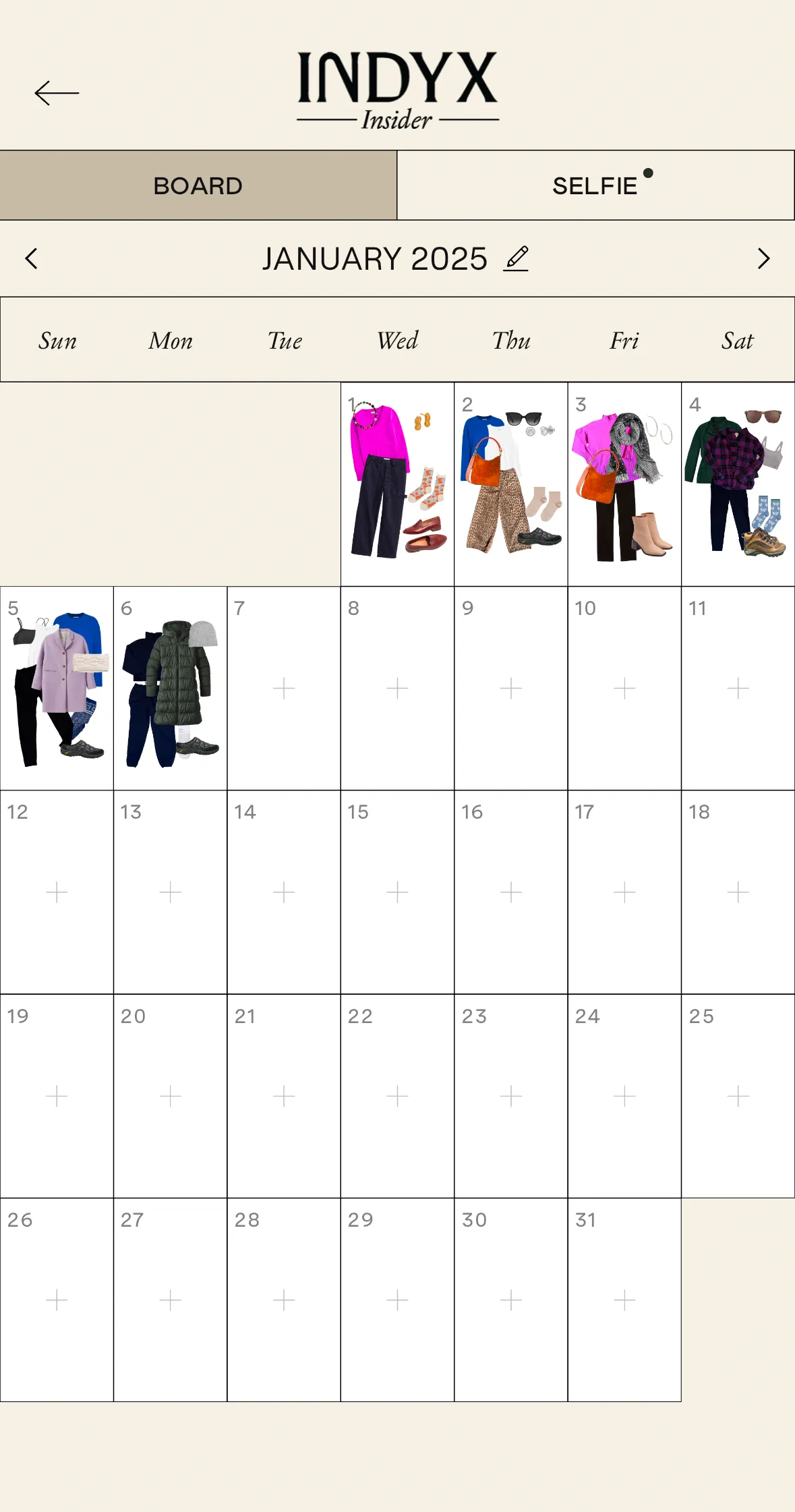
I love that I can set a cover outfit for the calendar day and keep adding additional outfits or individual items for tracking. On any given day, I’m changing clothes at least three times (workout, outside errands or dinner, pajamas) and I like having the flexibility to make the calendar display whatever outfit I wore the most that day.
My only “magic wand” wish list ask is: it would be cool if I could upload a new item from the outfit builder flow. I’m often in the middle of building an outfit when I realize I haven’t added something to the digital closet yet. It’s kind of clunky to navigate backwards and add it to a saved outfit in progress.
I also wish the whole app had a desktop version but that’s a feature request for another day…
Analytics, charts, and graphs
We’re only a week into this new year and I know my top three most worn items are:
- The black Merrell winter clogs (the ones I bought for Iceland)
- A royal blue Helmut Lang crewneck wool sweater, and
- My Goldbug peanut stud earrings—RIP Jimmy Carter
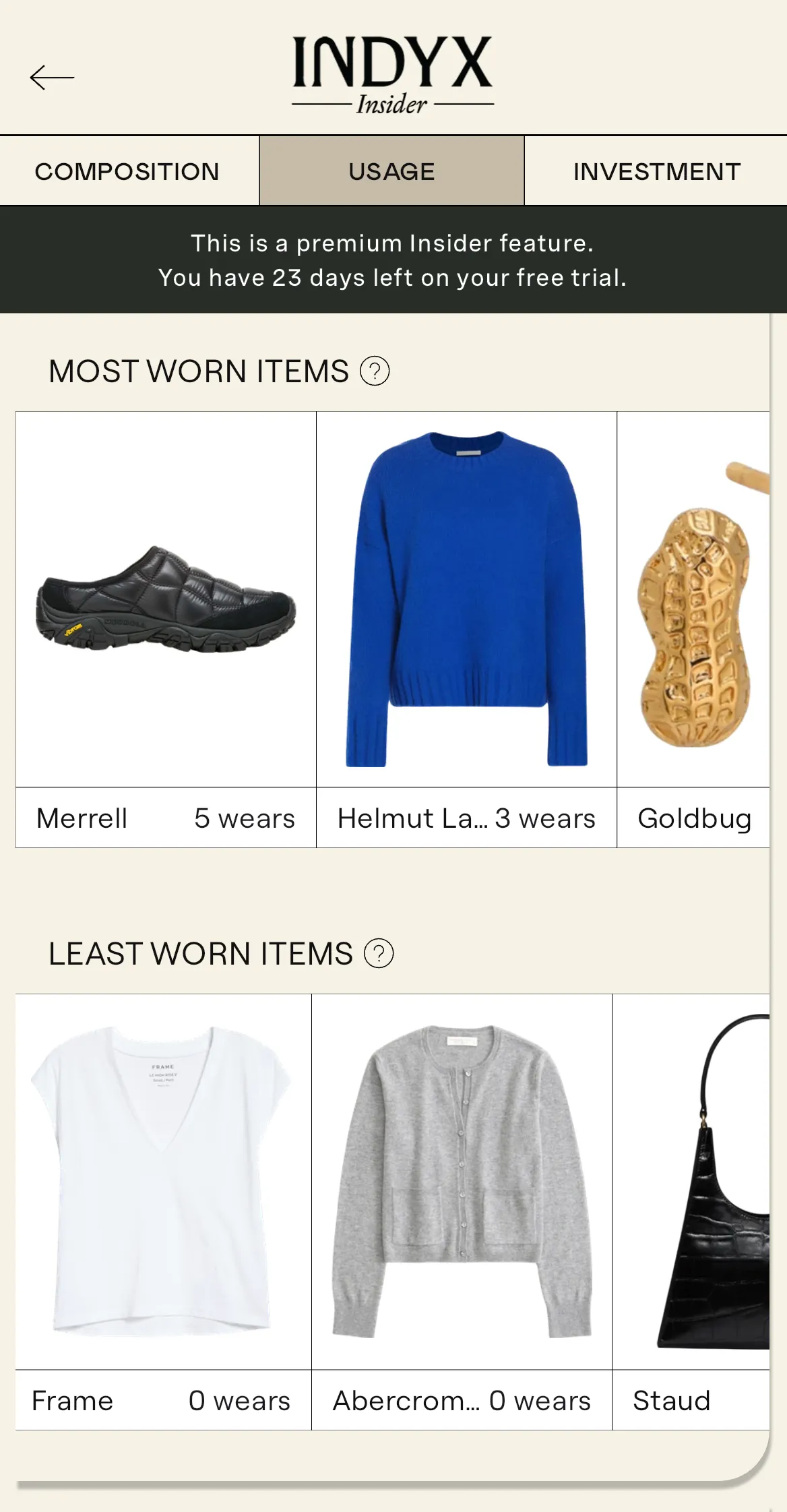
As I keep using the app, I’m excited to get richer stats on things like Longevity and Items Donated.
The analytics are clearly marked as a paid feature (thank you, Indyx, for such a clear UX!) and I think $60 / year is a great value for the insights. I’m looking forward to subscribing to an “Insider” membership when my free trial ends.
If tracking what I’m wearing and incentivizing more responsible behavior prevents me from even one impulse shop per year, the app will pay for itself.
Indyx for everything
This may sound extreme, but I want something like Indyx for EVERYTHING.
Books. Home decor. Kitchen equipment. Even pantry items.
I already keep a Google Sheet of my food in the house for weekly meal planning. What if I could forward my grocery store receipts into an app and get recipe recommendations to optimize against food waste?
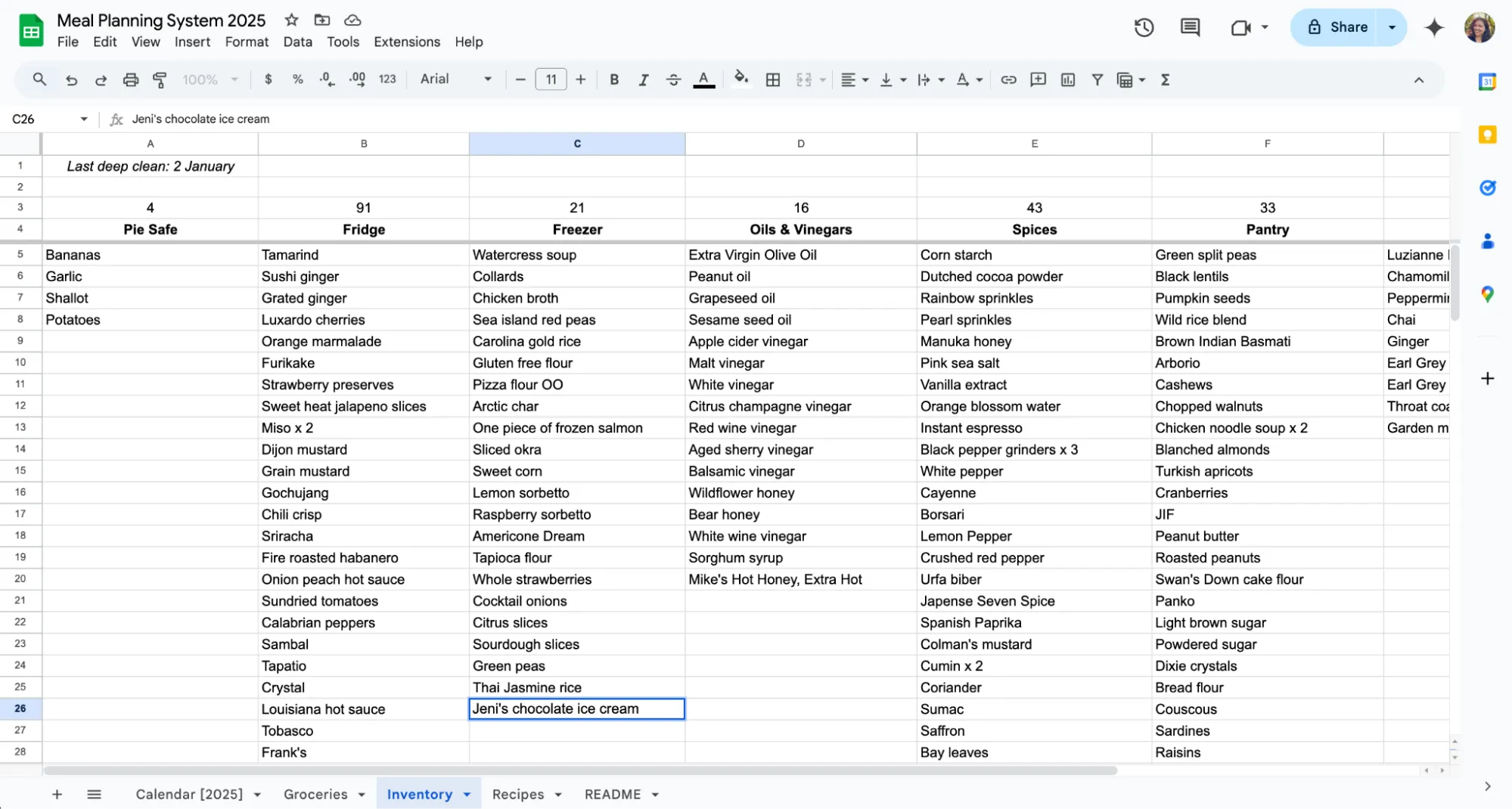
Whether you’re buying ice cream or new sneakers or a cable management system for your home office, shopping is work. Household management is a job. There’s a lot of room for improving operations.
Total inventory on EVERYTHING could mean:
- Less waste
- Easier donating and sharing free items
- Easier planning for things like estate sales, insurance, or bankruptcy petitions
- Better product recommendations
If we all have to work and consume and manage atomic households, what tools and systems could we put in place to make the business of owning stuff less wasteful and less stressful?
I’m curious whether the philosophy behind Indyx will roll over into other categories, especially as AI makes it easier to label and categorize items. Of course, there’s a careful trade off there. If the AI computations require so much energy that they offset the benefits of the waste reduction, that’s no fun. It would be a interesting challenge to figure out.
If you’re working on something in this space, I’d love to hear what you’re building!